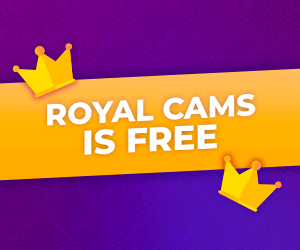The moment your loan application gets denied because of that missed credit card payment two years ago can feel like financial suffocation—like the system has permanently locked you out. After helping hundreds of clients with credit scores below 580 secure financing and rebuild their financial lives, I’ve learned the banking industry’s best-kept secret: bad credit doesn’t mean no options, it just means working smarter within a system rigged against you. The right approach can mean the difference between predatory payday loans at 400% APR and affordable financing that actually helps repair your credit.
Traditional banks will treat you like a financial leper with subprime credit, but credit unions operate by different rules. These member-owned institutions evaluate applications holistically—the one that approved my client’s auto loan at 8% (despite his 520 credit score) considered his twelve years of steady employment at the same factory. Many offer “credit builder” loans where the money gets deposited into a locked savings account while you make payments, reporting positive activity to all three bureaus. The $1,500 loan my college-student niece secured through her local credit union charged just 6% interest while boosting her score 83 points in seven months.
Peer-to-peer lending platforms like Upstart and LendingClub use artificial intelligence to look beyond traditional credit scores. Upstart’s algorithm approved a client of mine—a freelance graphic designer with uneven income but $20,000 in annual retirement contributions—for a debt consolidation loan at 11% when banks offered nothing but 29% credit cards. These platforms weigh factors like education, work history, and even SAT scores (for younger applicants) to identify responsible borrowers trapped by thin credit files. The key is crafting a compelling “loan story” in the application’s free-form sections—explain past credit missteps and demonstrate current stability.
Secured credit cards become stealth credit-rebuilding tools when used strategically. The OpenSky Visa requires no credit check (just a $200 security deposit) and reports to all three bureaus. My most disciplined clients put one recurring bill on these cards—like a $40 phone payment—then set up autopay from their checking account. After twelve months of flawless payments, most qualify for unsecured cards with higher limits and deposit returns. The trick is keeping utilization below 10%—that means a $200 limit card should never carry more than $20 in charges when the statement closes.
Buy-here-pay-here dealerships prey on bad credit borrowers, but there’s a smarter auto financing path. “Sign and drive” programs from manufacturers like Hyundai and Kia often approve applicants with scores in the 500s—their captive finance arms care more about steady income than perfect credit. A client secured 0% financing on a $18,000 Elantra by putting down just 10% despite recent collections on her report. These deals usually require proof of income (recent pay stubs) and residence stability (utility bills in your name for 6+ months). The hidden benefit? These timely payments report to credit bureaus, unlike many subprime auto lenders.
FHA loans turn homeownership from fantasy to reality for borrowers with scores as low as 500. The catch? You’ll need a 10% down payment for scores between 500-579, but just 3.5% for 580+. The real magic happens when you combine this with down payment assistance programs—my client bought a $225,000 condo with just $2,000 out of pocket using a state-run grant. These government-backed loans ignore traditional debt-to-income ratios if you have compensating factors like significant cash reserves or retirement accounts. The USDA’s rural development loans go further—0% down payments for qualifying properties outside urban areas.
401(k) loans emerge as shockingly affordable options when traditional lenders turn you down. While financial advisors warn against “raiding your retirement,” the math often favors borrowing from yourself rather than predatory lenders. My corporate-employed client accessed $15,000 from his 401(k) at just 4.5% interest—with all payments going back into his own account. Unlike credit checks, these loans only require proof you won’t exceed the $50,000 or 50% of vested balance limit. The repayment happens through payroll deduction, eliminating late payment risks that could further damage credit.
The most overlooked resource? Community development financial institutions (CDFIs). These nonprofit lenders exist specifically to serve borrowers traditional banks ignore. One approved a $5,000 business loan for my client with a 540 credit score at 8% interest—with free financial coaching included. Their “ability-to-repay” underwriting considers alternative credit data like rent and utility payments that normal lenders ignore. The Responsible Business Lending Network connects borrowers with local CDFIs offering everything from emergency loans to equipment financing.
Cosigner solutions work when structured carefully. Rather than asking someone to guarantee your entire debt, seek a “limited co-sign” where they’re only responsible for a portion. LightStream (a SunTrust affiliate) allows this innovative approach—my client’s mother co-signed just 25% of his $10,000 loan, minimizing her risk while helping him secure a 7% rate despite recent bankruptcy. The co-signer’s credit isn’t impacted unless you default, and most lenders release co-signers after 12-24 consecutive on-time payments.
Credit-builder products from fintech companies like Self and Credit Strong function like forced savings accounts with credit benefits. You “borrow” $1,000 that gets placed in a certificate of deposit while making monthly payments. After twelve months, you receive the CD plus interest—having established perfect payment history. My client boosted her score 112 points using this strategy while accumulating $1,100 in savings—far better than wasting money on high-interest loans.
The ultimate hack? Become an authorized user on someone else’s seasoned credit card. A relative added my client to her 12-year-old Amex with a $25,000 limit and 3% utilization—overnight his credit history gained a decade of perfect payments. Most scoring models backdate this history, though you’ll want to confirm the card issuer reports authorized users to all three bureaus. The account holder retains full control and isn’t liable for your charges—you don’t even need access to the physical card.
Avoid the desperation trap of payday alternative loans (PALs) from predatory lenders. Even “reputable” options like OneMain Financial charge up to 36% APR—a client paid $2,900 in interest on a $5,000 loan over three years. Instead, explore salary advance apps like Earnin or Dave that provide small cash advances against your next paycheck with optional tips instead of interest. Credit unions now offer similar products—my local one provides $500 advances at 0% interest with a $10 processing fee.
Every financial move with bad credit must serve two masters: solving your immediate need while repairing your credit for better options next time. The clients who escape the subprime trap fastest are those who treat every payment as a brick in their credit-rebuilding foundation. That $35 secured credit card payment matters as much as the $350 car payment when it comes to demonstrating reliability.
The system wants you to believe bad credit means permanent second-class financial citizenship. In reality, it just requires working the angles most borrowers never discover—the credit union loopholes, the fintech innovations, the government programs hiding in plain sight. Your next loan approval might depend less on your past mistakes than on knowing which lender cares about what metrics. When you crack that code, you don’t just get the money you need—you start rebuilding the financial identity that unlocks every door.







